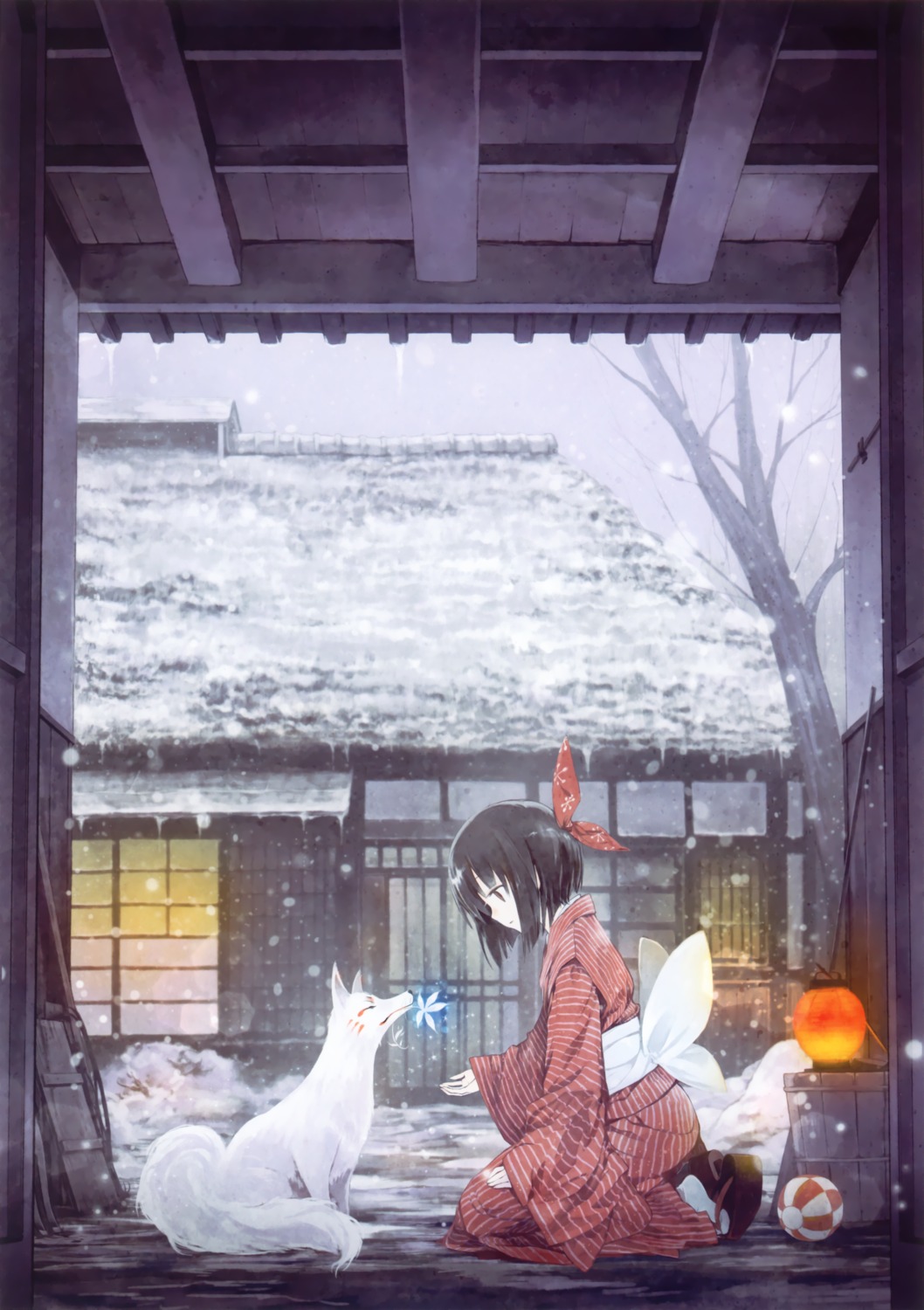« Previous Next » This post is #52 in the Eshi 100-Nin Ten 03 pool.
高野音彦
Otohiko Takano
ゆきのはな
Yuki no hana (Snow Flower)
もう10年以上、乱杭歯のように並ぶコンクリートの建物に囲まれて東京に住んでいる。慣れこそしたもののこの雑然とした風景は一向に好きになれなし、。
私の世代だとかなり珍しいと思うのだが、小学校に上がる前まで実家の建物が茅葺き屋根の古い家だった。幼少期のぼんやリとした記憶の中でもあの屋根の柔らかい輪郭ははっきり覚えているし、家が建て替えられて瓦屋根になった時はなんだか落胆したように思う。
一方でこの東京の景色もまた何十年か何百年もすると今は想像もできないような素材や形状の建物に置き換わって行くのだろう。その時誰かがかつての無計画なコンクリー卜の町並みを思い出しノスタルジーに浸るのだとしたら、少しの優越感を感じないでもない。
景色は変わっていく。失われたものへの寂寥こそが時間を越えて共有し得る「日本の風景」の正体なのだとすれば、寂しいようなそれで良いような。
I have been living within the snaggletoothed concrete skyline of Tokyo for more than ten years now. Despite having become used to it, I cannot learn to like the chaotic scenery here.
I think that it is unusual for someone of my generation, but until I started primary school, I lived in an old farmhouse with a thatched roof. My memories of that time are a bit vague now, but I still recall the soft outline of the roof, and when the house was rebuilt with a tile roof, I think I was rather disappointed.
On the other hand, I think that Tokyo's scenery will also undergo a huge change over the course of the next few decades or centuries, with buildings made in shapes and of materials we cannot even imagine today. It gives me a slight feeling of superiority to think that when that happens, there might be people who feel nostalgia towards today’s unorganized concrete landscape.
The landscape continually changes. If the desolation people feel for what they have lost is the true form of ‘a Japanese landscape that surpasses time, then I think that is sad, although maybe it is for the best.
Otohiko Takano
ゆきのはな
Yuki no hana (Snow Flower)
もう10年以上、乱杭歯のように並ぶコンクリートの建物に囲まれて東京に住んでいる。慣れこそしたもののこの雑然とした風景は一向に好きになれなし、。
私の世代だとかなり珍しいと思うのだが、小学校に上がる前まで実家の建物が茅葺き屋根の古い家だった。幼少期のぼんやリとした記憶の中でもあの屋根の柔らかい輪郭ははっきり覚えているし、家が建て替えられて瓦屋根になった時はなんだか落胆したように思う。
一方でこの東京の景色もまた何十年か何百年もすると今は想像もできないような素材や形状の建物に置き換わって行くのだろう。その時誰かがかつての無計画なコンクリー卜の町並みを思い出しノスタルジーに浸るのだとしたら、少しの優越感を感じないでもない。
景色は変わっていく。失われたものへの寂寥こそが時間を越えて共有し得る「日本の風景」の正体なのだとすれば、寂しいようなそれで良いような。
I have been living within the snaggletoothed concrete skyline of Tokyo for more than ten years now. Despite having become used to it, I cannot learn to like the chaotic scenery here.
I think that it is unusual for someone of my generation, but until I started primary school, I lived in an old farmhouse with a thatched roof. My memories of that time are a bit vague now, but I still recall the soft outline of the roof, and when the house was rebuilt with a tile roof, I think I was rather disappointed.
On the other hand, I think that Tokyo's scenery will also undergo a huge change over the course of the next few decades or centuries, with buildings made in shapes and of materials we cannot even imagine today. It gives me a slight feeling of superiority to think that when that happens, there might be people who feel nostalgia towards today’s unorganized concrete landscape.
The landscape continually changes. If the desolation people feel for what they have lost is the true form of ‘a Japanese landscape that surpasses time, then I think that is sad, although maybe it is for the best.

